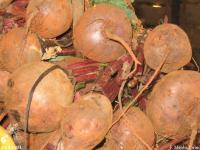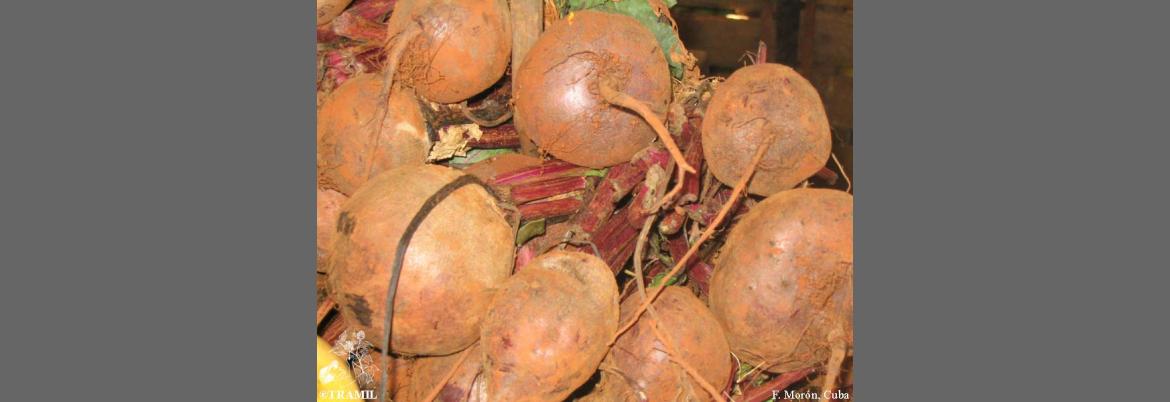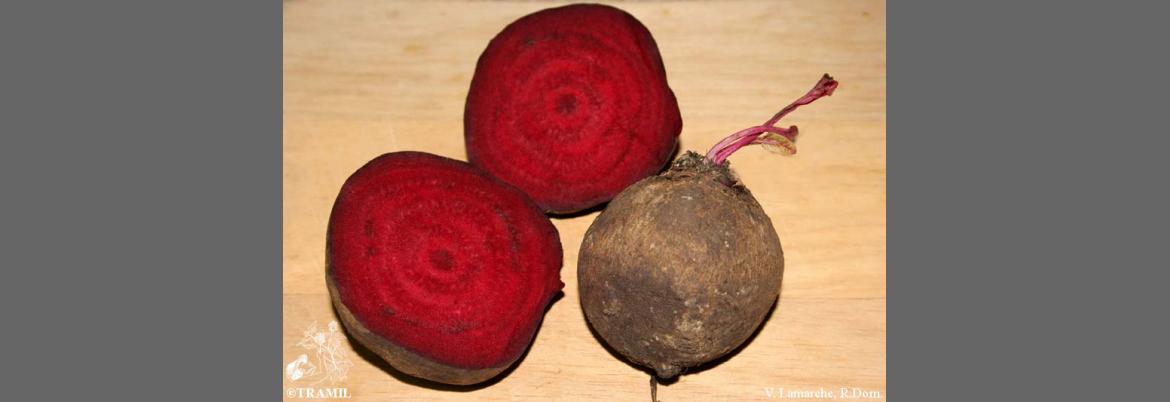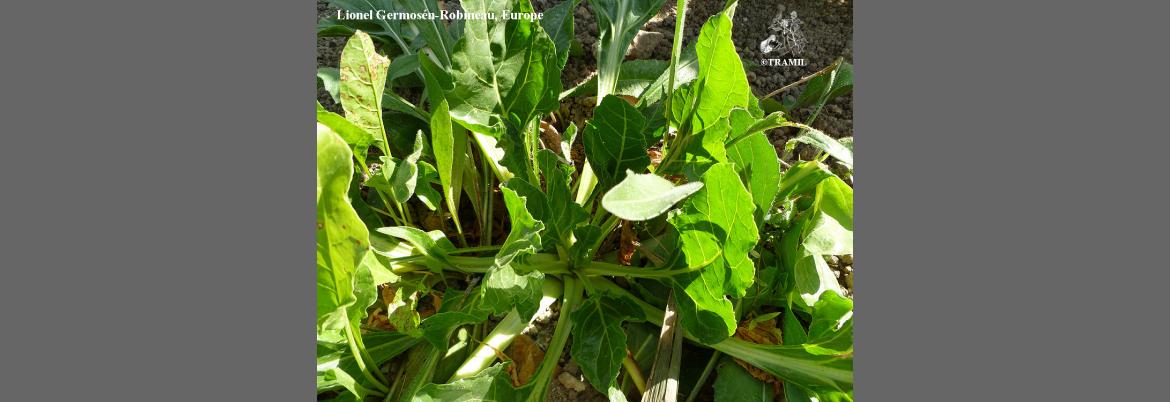1 WENIGER B, ROUZIER M, 1986 Enquête TRAMIL. Service Oecuménique d'Entraide SOE, Port au Prince, Haïti.
2 GERMOSEN-ROBINEAU L, GERONIMO M, AMPARO C, 1984 Encuesta TRAMIL. enda-caribe, Santo Domingo, Rep. Dominicana.
3 WENIGER B, 1987-88
Encuesta TRAMIL. enda-caribe, Santo Domingo, Rep. Dominicana.
4 CHIERICI L, 1953 Allantoin and tyrosine in beets. Ateneo Parmense 24:185-188.
5 DUBBELS R, REITER RJ, KLENKE E, GOEBEL A, SCHNAKENBERG E, EHLERS C, SCHIWARA HW, SCHLOOT W, 1995 Melatonin in edible plants identified by radioimmunoassay and by high performance liquid chromatography-mass spectrometry. J Pineal Res 18(1):28-31.
6 TYIHAK E, 1964 Effective component in the effect of the red beet (Beta vulgaris var conditiva) on tumors. Naturwissenschaften 51:315-316.
7 IKEKITA M, MORIYA H, MORIWAKI C, RURIKAWA T, 1979 Some properties of anti-bradykinin substance from beet (Beta vulgaris L. var rapaDumort.f rubra DC.) roots. Yakugaku Zasshi 99:607-611.
8 NEURATH GB, DUNGER M, PEIN FG, AMBROSIUS D, SCHREIBER O, 1977 Primary and secondary amines in the human environment. Food Cosmet Toxicol 15(4):275-282.
9 PARFENENKO VV, BUZINA GV, LUTSENKO OK, 1974 Production of gel-forming beet pectin in the presence of 1.1% hydrochloric acid. Khlebopek Konditer Prom 1974(10):20.
10 CHOLLET MM, 1950 Sucrose and raffinose in beets. Bull Soc Bot Fr 1950:173-177.
11 PIATTELLI M, MINALE L, PROTA G, 1965 Pigments of centrospermae. III. Betaxanthins from Beta vulgaris L. Phytochemistry 4:121-125.
12 HERRMANN K, 1957 Oxidative enzymes and phenolic substrate in vegetables and fruit. I. hydroxycinnamic acids. Z Lebensm-Unters Forsch 106:341-348.
13 BURBA M, NITZSCHKE U, 1974 Oxalic acid in sugar beet roots. Int Sugar J 76:326.
14 TAKAHASHI H, SASAKI T, ITO M, 1987 New flavonoids isolated from infected sugar beet roots. Bull Chem Soc Japan 60(6):2261-2262.
15 ELLIGER CA, HALLOIN JM, 1994 Phenolics induced in Beta vulgaris by Rhizoctonia solani infection. Phytochemistry 37(3):691-693.
16 YOSHIKAWA M, MURAKAMI T, KADOYA M, MATSUDA H, MURAOKA O, YAMAHARA J, MURAKAMI N, 1996 Medicinal foodstuffs. III. Sugar beet. (1): Hypoglycemic oleanolic acid oligoglycosides, betavulgarosides I, II, III, and IV, from the root of Beta vulgaris L. (Chenopodiaceae). Chem Pharm Bull 44(6):1212-1217.
17 YOSHIKAWA M, MURAKAWI T, KADOYA M, YAMAHARA J, MATSUDA H, 1998 Medicinal foodstuffs. XV. Sugar beet. (2): Structures of betavulgarosides V, VI, VII, VIII, IX, and X from the roots and leaves of sugar beet (Beta vulgaris L., Chenopodiaceae). Chem Pharm Bull 46(11):1758-1763.
18 DUKE JA, ATCHLEY AA, 1986 Handbook of proximate analysis tables of higher plants.Boca Raton, USA: CRC Press, p26.
19MORON F, 1990 Actividades biológicas de Beta vulgaris. Informe TRAMIL. Laboratorio Central de Farmacología, Facultad de Medicina “Dr. Salvador Allende”, Instituto Superior de Ciencias Médicas de La Habana, La Habana, Cuba.
20CARBALLO A, RODRIGUEZ A, RODRIGUEZ O, LLENDERROZOS A, 1992 Efectividad de la administración del zumo de raíces de remolacha (Beta vulgaris L.) en el control de la astenia. Estudio clínico controlado. Informe TRAMIL. Instituto Superior de Ciencias Médicas. Santa Clara, Cuba.
21 KOSHIMIZU K, OHIGASHI H, KONDO A, YAMAGUCHI K, 1988 Screening of edible plants against possible anti-tumor promoting activity. Cancer Lett39(3):247-257.
22 GUERIN JC, REVEILLERE HP, 1984 Antifungal activity of plant extracts used in therapy I. Study of 41 plant extracts against 9 fungi species. Ann Pharm Fr42(6):553-559.
23 PRAHOVEANU E, ESANU V, ANTON G, FRUNZULIC S, 1986 Prophylactic effect of a Beta vulgaris extract on experimental influenza infection in mice. Rev Roum Med Virol37(2):121-124.
24 JOSEPH H, GRANDGUILLOTTE M, 1986 Recherches bibliographiques. TRAMIL II, Santo Domingo, República Dominicana, UASD/enda-caribe.
25 RAO VSN, DASARADHAN P, KRISHNALAH KS, 1979 Antifertility effect of some indigenous plants. Indian J Med Res70:517-520.
26 NAVRATIL B, ZEMAN L, 1976 Effect of the daily ration and the type of complete mixed feed fed to pregnant sows on the number and weight of piglets. Zivocisna Uyrpba21:295-303.
27 GREER MA, ASTWOOD EB, 1948 The antithyroid effect of certain foods in man as determined with radioactive iodine. Endocrinology43:105-119.
28 ALKOFAHI A, ABDELAZIZ A, MAHMOUD I, ABUIRJIE M, HUNAITI A, EL-OQLA A, 1990 Cytotoxicity, mutagenicity and antimicrobial activity of forty Jordanian medicinal plants. Int J Crude Drug Res28(2):139-144.
29 VANACLOCHA B, CAÑIGUERAL S, (eds.) 2003 Beta vulgaris. En: Fitoterapia. Vademecum de Prescripción. 4ta Edición. Editorial MASSON, Barcelona, España, p. 428.














